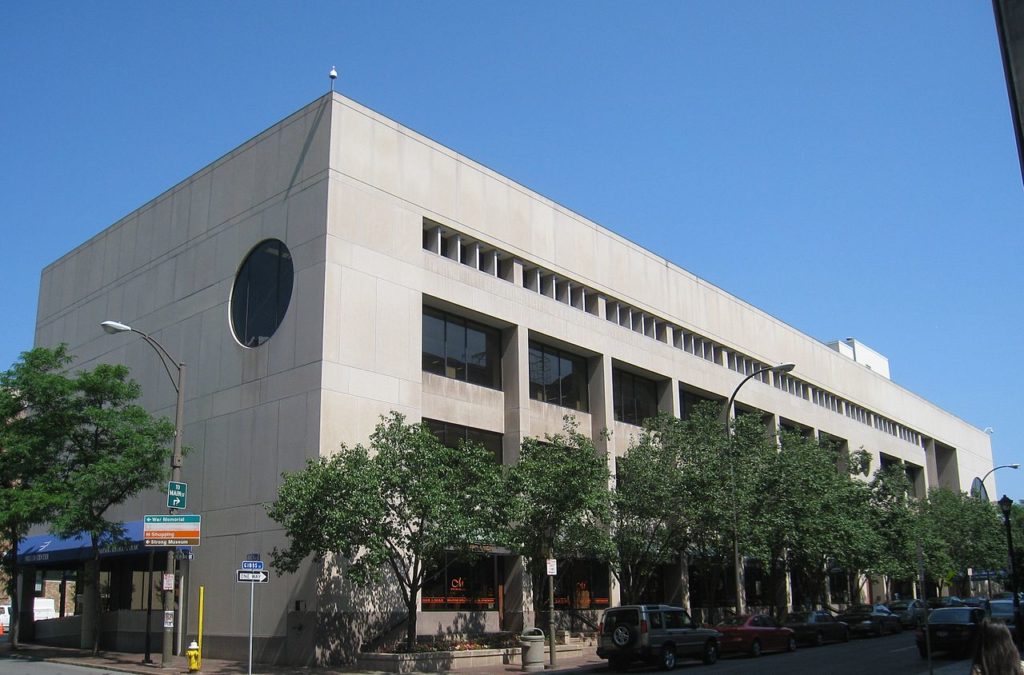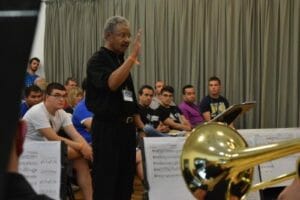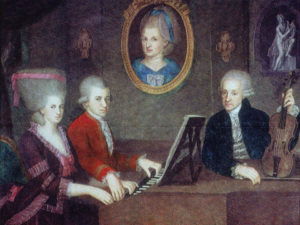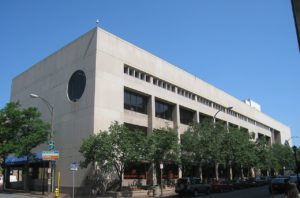
Certainly, we would all agree that the world of music has changed markedly since the time our nation was founded 244 years ago. Many would agree that we have gradually developed a remarkable series of collegiate music schools and departments, all over the country. But the academic world changes slowly, and as a result we tend to develop young musicians trained for the societal needs of yesterday rather than for tomorrow. During the period 1865-1965, when most of our collegiate musical institutions were founded, there was a strict separation between writing about music and learning how to perform on one’s instrument, a situation which has changed slowly in the meantime, almost everywhere in the United States. In the beginning our focus was almost entirely on music composed by dead European males.
Jazz, a genuinely American music, was not introduced into American music schools until 1968, after Lyndon Johnson had passed civil rights legislation. It was initially studied at Indiana University, the Eastman School, and the New England Conservatory, where Gunther Schuller, ever an imaginative president, introduced a program he called “Third Stream,” a hybrid that resulted from the marriage of jazz to “classical” genres. When I asked Schuller in 1999 what he thought of Third Stream on the threshold of our new century, he reminded me that over the preceding 30 years, thousands of young musicians from all over the world had come here to study, and that in doing so they had learned from each other’s musics, creating what he called an ocean marked by the musical admixture of several dozen rivers.
At a time in American fiscal history when we are suffering from a worldwide pandemic and a serious economic collapse, there is not going to be anything approaching adequate fiscal support for the appropriate broadening of musical curricula. Put another way, many institutions should be looking for deans who will help our schools and departments redefine themselves, working towards a national goal of the social diversity which is America. Unfortunately, the national accrediting agency, NASM, will do its best to try to make all the schools and departments look as much like one another as one can imagine – not a worthwhile goal in my view for the years ahead.
This implies that in the interviewing of decanal candidates, each person should be asked how he or she might design a curriculum appropriate for musicians who will be at work in the half century ahead. He should be asked to comment on an appropriate balance between full- and part-time faculty. Presidents and provosts doing the interviewing should reflect on Duke Ellington’s statement that “There is good music – and the other stuff,” a statement implying that the quality of the music is dependent in important measure on the listening skills of the audience.
The candidate should be asked for his or her views on five-year undergraduate programs with double fields of concentration: music and medicine, music and business, music and technology, music and law, for example. At a time when the American collegiate world is producing 35,000 annual music degrees and at a time when symphony orchestras are at serious risk for their survival, there is every reason for a talented young cellist to go to medical school after she graduates from college, making quartet playing the center of a rich avocational life that includes concert going.
Some other questions for the decanal candidate: Who do you think of as our institution’s principal competitors for potential music students? How ought we to try to determine whether those competitors are Eastman and Oberlin, or Rice and Texas, for example? How would you go about the choice of a reliable deputy? Do you have any experience raising money, and if you do, do you enjoy that challenge? What sorts of opportunities do you see for seeking the guidance of other leaders in music? How would you feel about the eventual appointment of current students as faculty members? What kinds of opportunities do you see on our campus for persuading our music students of their long-term responsibilities as musicians to develop future audiences among our students in other fields?
At Eastman in the 1980s I was blessed with two very special trumpet professors, a married couple named Barbara Butler and Charles Geyer. Not only did they teach the trumpet with superb results but they came up with a wonderful idea worth emulating everywhere. Each of their trumpet students was asked each year to invite a student from the University’s River Campus for a date at an Eastman concert, followed by a sandwich and a cup of coffee during which our young musician learned what his or her date had gotten out of the concert. Our music student was then tasked with writing a two-page paper on the subject for his trumpet teachers, without whose satisfactory conclusion the student would not receive an A for the semester! The idea was for young musicians to learn that the future of audience development was their responsibility.
When I began work as a dean in 1972, I had had an unusually broad musical education but almost no administrative experience. In those days, when most young musicians thought of themselves as soloists, chamber music players, or orchestral members, it was clear that almost all of us would become music teachers of one kind or another, though too many thought of the latter as a fall-back position, a serious problem for much of the world of music teaching. I am impressed by the growing number of entrepreneurial ensembles that have developed in the meantime, including The Breaking Winds, No Dogs Allowed, Break of Reality, Alarm Will Sound, 8th Blackbird, the International Contemporary Ensemble, and the Ying, Kronos, Ariel, and Miro quartets, for example. All of those – and others as yet undreamed of – manage their own careers and create their own future audiences.
In that connection let me close with brief endorsements for Robert Winter’s incredible music app, Music in the Air (MITA), on whose website you find yourself now, and for the Eastman School’s Institute for Arts Leadership.
Though this brief article concerns the appointment of music deans, it applies more generally in fact to a broad spectrum of decanal leaders at a time when American higher education is itself in broad need of reform.
Reimagining Learning Materials with MITA
MITA was designed for forward-thinking, price-conscious educators interested in promoting a broad understanding of music and its role in society. Learn why MITA’s joyful, sound-drenched approach has been adopted by some of the world’s leading music schools.



